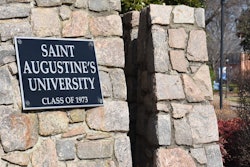MESA, Ariz.
Nearly 100 Tulane University students who spent their fall semester in the desert after Hurricane Katrina flooded their campus are heading back to New Orleans.
The emergency arrangement between Arizona State University and Tulane allowed the students to continue their course work in Tempe after Katrina ripped up the Gulf Coast in August.
So much of the campus was flooded that it forced the university to close. The evacuation displaced students and prompted colleges around the country to temporarily enroll some Tulane students.
ASU officials arranged for housing, putting some students up in apartments and others as guests at faculty members’ homes.
An especially unusual arrangement was made for Tulane’s fifth-year architecture class. Wellington Reiter, ASU’s College of Design dean and a Tulane alumnus, moved Tulane’s entire architecture class and five of its faculty members into a studio near the ASU Foundation offices in Tempe.
Even though they were miles from their home campus, the students attended their Tulane courses as planned.
Now, it’s time for those future architects to go home and take back ideas of what a rebuilt New Orleans should look like.
“In New Orleans right now, everyone’s kind of throwing out all these ideas” for rebuilding, said Noah Marble, a recent graduate of Tulane’s architecture program who was a teaching assistant for the Tulane students. “The point of this study is to get as many ideas out there as we can.”
At ASU, Tulane students concentrated on four zones of the city generally impoverished and hard hit by the hurricane: The Lower Ninth Ward, Florida Housing Community, the Bywater and the Desire Housing Community. They designed graphics and strategies for replacing homes and the neighborhoods.
The project was very personal for architecture student Mark Heck, 22, a New Orleans native. He grew up just north of the city and traveled through the Ninth Ward almost daily to class. His home was ruined by flooding.
Heck said he wants to make sure victims are remembered by building a memorial bridge for pedestrians.
But rebuilding New Orleans has stirred a debate.
Some architects and developers wonder if the damage presents an opportunity for New Orleans to escape its racist past. Others believe recreating the structures in characteristic of the city’s southern history will help retain its flavor.
Either way, emotions are wrapped up in the discussions.
“It’s easy to erase physical structures,” said Tulane clinical architect professor Byron Mouton. “It’s not easy to erase memories, family structure.”
— Associated Press
© Copyright 2005 by DiverseEducation.com















